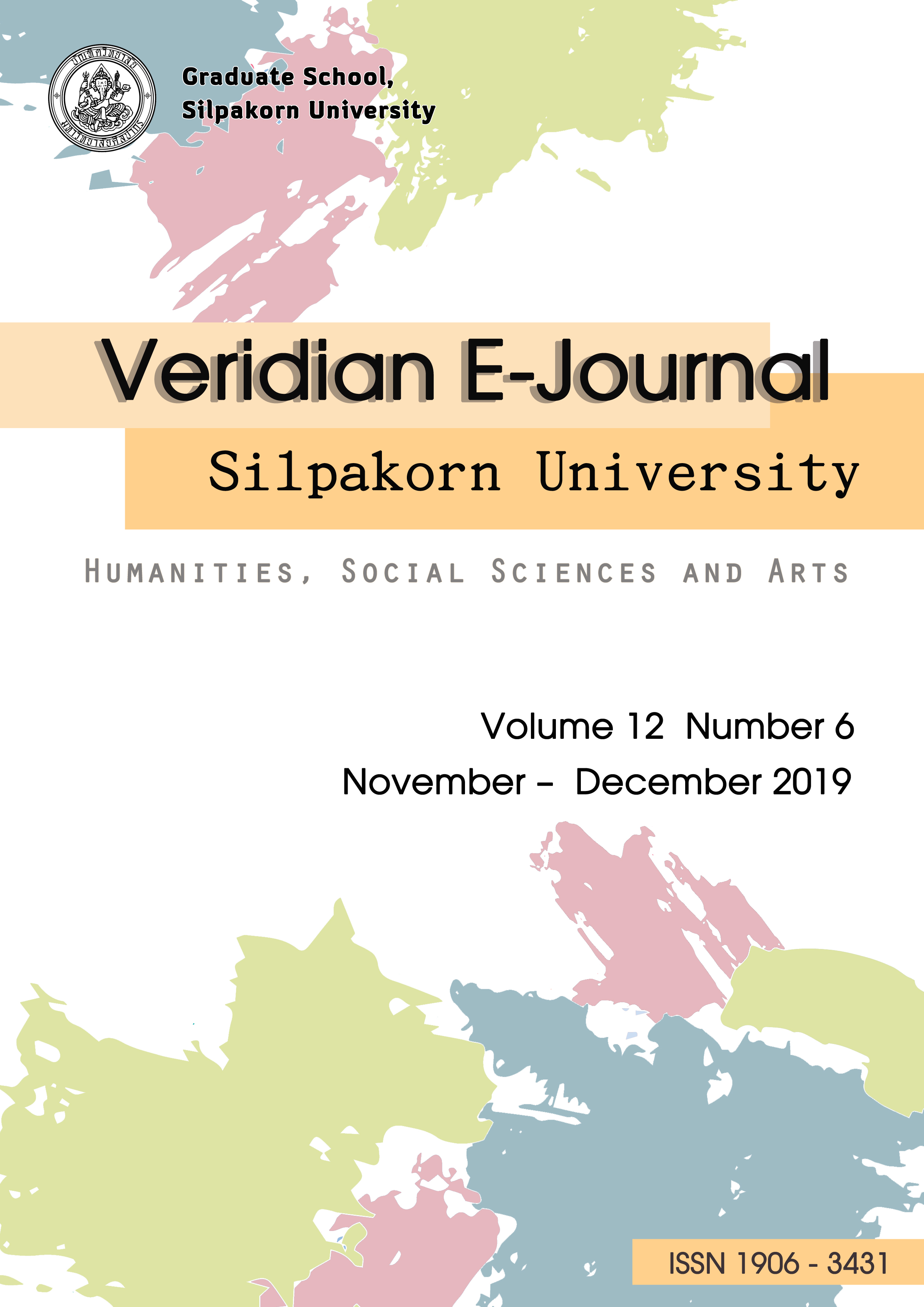ผลของโปรแกรมการออกกำลังกายรำแม่สะเอิงประยุกต์ที่มีต่อการทรงตัวในผู้สูงวัย (The effects of Applied Rum Mae Sa Aung exercise program on balance in the elderly)
Main Article Content
บทคัดย่อ
การวิจัยนี้เป็นการวิจัยกึ่งทดลองมีวัตถุประสงค์เพื่อพัฒนาโปรแกรมการออกกำลังกายรำแม่สะเอิงประยุกต์สำหรับป้องกันการล้มในผู้สูงวัย ตัวอย่างเป็นผู้สูงวัยเพศหญิง จำนวน 60 คน แบ่งเป็นกลุ่มทดลอง 30 คน และกลุ่มควบคุม 30 คน เครื่องมือวิจัย ได้แก่ 1) โปรแกรมการออกกำลังกายรำแม่สะเอิงประยุกต์ 2) แบบทดสอบการทรงตัว จำนวน 4 รายการประกอบด้วย Berg Balance Scale (BBS) Functional Reach Test (FRT) 8-Foot Up and Go Test (8FUGT) และ Timed Up and Go Test (TUG) 3) แบบประเมินความพึงพอใจ วิเคราะห์ข้อมูลโดยใช้ค่าเฉลี่ย ส่วนเบี่ยงเบนมาตรฐาน วิเคราะห์ความแปรปรวนแบบวัดซ้ำ และวิเคราะห์ความแปรปรวนร่วม ที่ระดับนัยสำคัญทางสถิติ 0.05 ผลการวิจัยพบว่า โปรแกรมการออกกำลังกายรำแม่สะเอิงประยุกต์สำหรับป้องกันการล้มในผู้สูงวัยที่พัฒนาขึ้น เป็นโปรแกรมออกกำลังกายที่มีระดับความหนัก ระดับเบา ใช้เวลา 3 วัน/สัปดาห์ ครั้งละ 30 นาที แบ่งเป็น 3 ช่วง ได้แก่ ช่วงอบอุ่นร่างกาย 5 นาที มี 6 ท่า ช่วงออกกำลังกาย 20 นาที มี 8 ท่า และช่วงคลายอุ่น 5 นาที มี 6 ท่า หลังการทดลอง 8 และ 12 สัปดาห์ กลุ่มทดลองมีคะแนนการประเมินด้านการ ทรงตัวดีกว่าก่อนทดลองและดีกว่ากลุ่มควบคุมอย่างมีนัยสำคัญทางสถิติที่ระดับ 0.05 ในรายการทดสอบ FRT, TUG และ 8FUGT โดยกลุ่มทดลองมีความพอใจต่อโปรแกรมการออกกำลังกาย อยู่ในระดับมากที่สุด
This quasi experimental research aimed to develop an applied Rum Mae Sa Aung exercise program for fall prevention among elderly. The subjects were 60 female elderly and equally divided into an experimental group (n=30) and a control group (n=30). The research instruments consisted of 1) an applied Rum Mae Sa Aung exercise program 2) the 4 physical fitness tests regarding balance which were Berg Balance Scale (BBS), Functional Reach Test (FRT), 8-Foot Up and Go Test (8FUGT) and Timed Up and Go Test (TUG) and 3) the satisfaction interview form. Data were analyzed by using mean, standard deviation, ANOVA with repeated and analysis of Covariance (ANCOVA). The followings were the research results: 1) an applied Rum Mae Sa Aung exercise program was light exercise intensity program. The duration of the program was 3 days per week and 30 minutes per day which divided into 3 parts; 5 minutes for warm up time with 6 steps, 20 minutes for exercise time with 8 steps and 5 minutes for cool down time with 6 steps. 2) after 8 and 12 weeks of an applied Rum Mae Sa Aung exercise program the experiment group had a significantly developed mean score of balance compared the control group and pretest (p<0.05) on Functional Reach Test (FRT), Timed Up and Go Test (TUG) and 8-Foot Up and Go Test (8FUGT). And 3) the result of satisfaction assessment of experimental group was very good level

